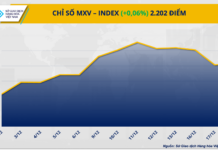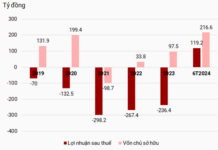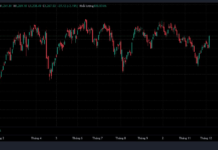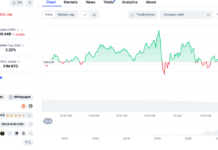
Citizens buying and selling petrol and oil at a Petrolimex gas station in Hanoi. Photo (illustrative): Tran Viet/TTXVN
Along with the main factors that have been affecting the global oil market in 2023 and continue to do so this year, how are the trade disruptions due to instability in the Red Sea currently affecting the prices of crude oil and imported petroleum products, sir?
The tensions in the Red Sea that occurred at the end of 2023 have led to sharp increases in oil and gasoline prices, including some instances of oil price spikes by 3%. However, if we look at the entire year of 2024, the intensified tensions in the Red Sea will have a more significant impact on transportation of goods, increased shipping times, and higher costs. If the tensions persist, they will exert significant pressure that will result in increased production costs and erosion of businesses’ profits, leading to a decrease in production and a gradual decline in demand for crude oil and petroleum products. In that scenario, the oil prices may decrease due to weaker demand.
Sir, how will the spare production capacity of the OPEC+ alliance affect oil prices amid geopolitical risks?
According to data from the International Energy Agency (IEA), the spare production capacity of the OPEC+ alliance during peak periods accounts for about 5% of global oil supply, equivalent to approximately 5 million barrels per day. In case of emergencies necessitating increased production capacity, this alliance can easily cope with the potential supply shortages in the market.
However, in reality, it is unlikely that severe supply shortages will occur in the near future due to the very good spare capacity of the OPEC+ countries and their proactive measures to replenish strategic oil reserves. Notably, the United States currently has a spare oil reserve capacity of 1 billion barrels per day.
According to the forecasts of many international organizations, this year’s global oil demand will increase compared to 2023 in the context of potential supply disruptions, which could even lead to shortages as early as Q1. How do you assess this forecast, sir?
The VPI finds this forecast feasible and consistent with the current oil market dynamics. The general interest rate landscape has shown signs of decreasing in several countries worldwide, indicating a cooling inflation compared to 2023. This will stimulate economic growth, leading to an increase in oil demand for production and business accordingly.
Regarding supply shortages, the VPI assesses the likelihood as very low. The basis for this assessment lies in the fact that many countries have strategic reserves while non-OPEC sources, such as shale oil supply in the United States, have continued to rise steadily from May 2023 until the end of last year. Therefore, in addition to OPEC’s supply, the market will be supplemented from non-OPEC sources, making the possibility of a supply shortage in Q1 or in 2024 unlikely.
How do international organizations and Vietnam Oil and Gas Institute forecast crude oil prices for this year?
The January 2023 report by the IEA projects that the average Brent crude oil price in 2024 will be around $82.5 per barrel. Energy consultancy firm Wood Mackenzie forecasts an average Brent crude oil price of $86.9 per barrel for 2024. In terms of supply and demand, both organizations estimate that in 2024, the supply and demand will be about 102 million barrels per day, an increase of approximately 1 million barrels per day compared to 2023. Moreover, the supply will slightly exceed the demand in 2024.
The VPI forecasts that the average Brent crude oil price in 2024 will range from $85 to $88 per barrel. The VPI also believes that there will be periods of significant oil price fluctuations during a short period of time in 2024. This is due to continuing political tensions in the Middle East between Israel and Hamas, which have not shown signs of easing. Additionally, political tensions between Russia and Ukraine, as well as tensions in the Red Sea, could escalate to a higher degree of tensions. Hence, rapid price increases can occur during 2024.
The VPI also predicts that the market’s supply and demand balance will remain relatively close, at around 102 million barrels per day, similar to the forecasts made by international organizations.
In the face of the market volatility in the global oil and gasoline market in 2024, what adaptive measures does Vietnam need to ensure domestic fuel supply, sir?
Currently, the Dung Quat Oil Refinery and the Nghi Son Oil Refinery, as well as other domestic blending sources, meet about 70% of the domestic consumption needs. The remaining deficit is fulfilled by importing from businesses to meet the domestic demand. According to VPI’s statistics, Vietnam’s gasoline and oil products consumption in 2023 is about 10 million tons.
Therefore, to ensure a stable domestic supply of fuel products in 2024, Vietnam needs to ensure reserves. Vietnam has already established regulations on oil and gasoline reserves. Hence, the main solution is to ensure the most balanced reserves to meet domestic demand.
A second solution is to improve forecasting capabilities to accurately predict specific consumption demands within each region, sector, or type of product. This will enable appropriate import plans or adjustments to the reserves, best suiting market demand and avoiding the situation where the supply is insufficient during high-demand periods.
A third solution is to apply new technologies and digital transformations to optimize transportation between market regions and supply areas, ensuring the distribution of oil and gasoline products between regions and avoiding localized supply shortages.
These are some viable and transparent solutions that we believe can be applied in 2004 to ensure a consistent fuel supply.
Thank you, sir!




































